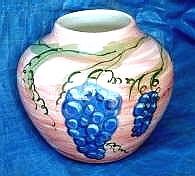The older the mold, the more accentuated will be the seam. The reason for the seam appearing at all, is explained by 'platelets'. Clay slip doesn't know where it is, it just knows it consists of platelets which lies one on top of the other. Everything is fine, in a mold, as long as the platelets have a flat flowing surface to lie down on. The platelets don't know to skip over a tiny gap in it's surface, so it follows around the tiny edge of the seam where the two sides of the mold are touching.
So you can imagine the platelets bending around that corner and into the tiniest crack. This means that the clay you're seeing that is formed by a seam, is the edges of the platelets (not the flat side of them). That's why it seems darker right at that spot.
The only way to eliminate that darkened seam and actually flatten it out so that it doesn't show at all, is the flatten it while the greenware is still very wet. Preferably, as soon as it comes out of the mold.
A view of what the platelets are doing right at the mold seam. Since you're seeing the edge of the platelets instead of the flat side (as usual), it appears darker in color.







No comments:
Post a Comment